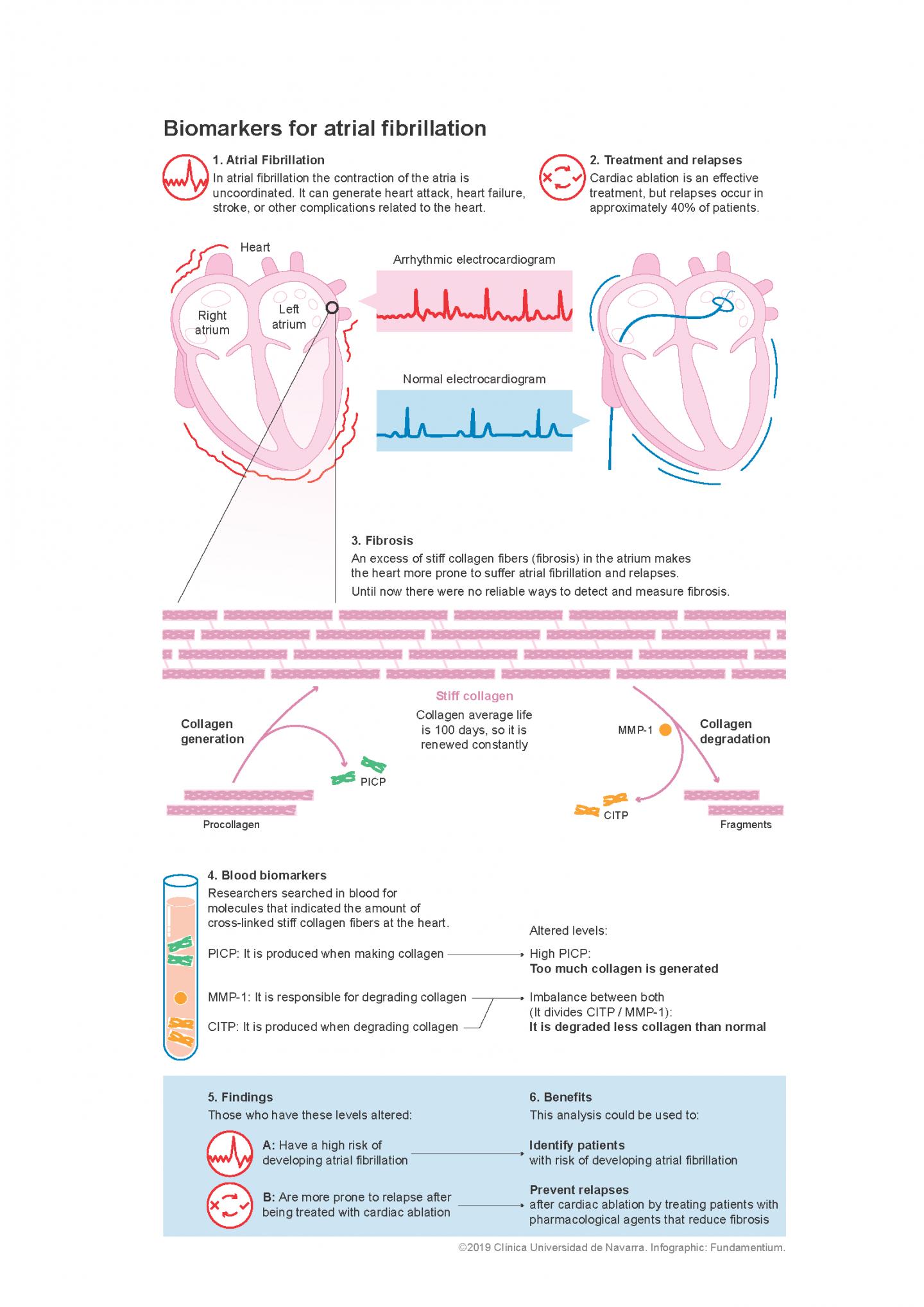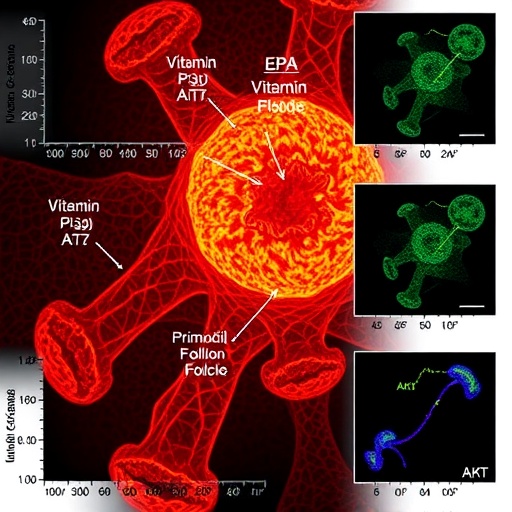Scientists at the University of Navarra link the alteration of three molecules with the prevalence, incidence, and recurrence of this cardiac ailment present in 33.5 million people in the world

Credit: Clínica Universidad de Navarra and Fundamentium
Pamplona (Spain), April 2nd, 2019. Scientists at the University of Navarra (Spain), in collaboration with clinicians from the University Hospital of Donostia, have identified two biomarkers associated with the risk of suffering atrial fibrillation, a cardiac ailment that affects more than 33.5 million people in the world. In the European Union, it is present in 8.8 million people over 55 years of age and, specifically in Spain, it affects more than 4% of the population over 40 years of age. The World Health Organization considers this disease as an epidemic due to its high morbidity and mortality, and a public health problem due to its high prevalence.
Atrial fibrillation is the most common alteration of the heart rhythm (arrhythmia). It happens when the heart pumps blood in an accelerated and irregular way, thus increasing the risk of suffering a heart attack, heart failure, stroke, or other complications related to this organ. Some common causes are heart disease or hormonal changes. It can be treated with medications and procedures, such as cardiac ablation, to correct irregular heart rhythms.
Researchers at Cima, Clínica Universidad de Navarra and the Faculty of Sciences, have discovered that, by analyzing a blood sample, it is possible to predict the appearance of this cardiac ailment. “The alteration of three molecules related to collagen metabolism (CITP, MMP-1, and PICP) determine the risk of suffering atrial fibrillation and the response to its treatment,” explains Dr. Javier Díez, director of the Cardiovascular Disease Program at Cima, Head of Research of the Department of Cardiology and co-director of the Department of Nephrology at the Clínica Universidad de Navarra.
Advances toward precision medicine
The study was performed in 392 patients, 150 of them treated with cardiac ablation. “We have found that patients with low blood levels of the CITP/MMP-1 ratio and elevated levels of PICP have a high risk of developing atrial fibrillation and that it recurred after cardiac ablation. The confirmation of these findings can lay the foundations to precisely adjust the most optimal treatment and follow-up for each patient according to these two biomarkers,” adds Dr. Díez, also from CIBERCV.
###
This research, led by Dr. Díez and Dr. Ignacio García-Bolao, director of the Cardiology and Cardiac Surgery Department at Clínica Universidad de Navarra, has been published in the prestigious Journal of the American College of Cardiology. The same number of this manuscript contains an editorial that highlights the scientific advance that this study implies toward precision medicine.
Caption: From the left: Gabriel Ballesteros, Susana Ravassa, Ignacio García-Bolao, Begoña López, Javier Díez, Arantxa González, Pablo Ramos, Jean Bragard and Ujué Moreno.
Bibliographic reference
Combination of Circulating Type I Collagen-Related Biomarkers Is Associated With Atrial Fibrillation
DOI:10.1016/j.jacc.2018.12.074
About Clínica Universidad de Navarra
Clínica Universidad de Navarra, with more than 2.800 full-time commitment professionals in both of its locations Pamplona and Madrid, is a research hospital and a model in personalized medicine in our country. Our hospital is renowned for its research and teaching labor, for its prestigious professionals and its career in the diagnosis and treatment of complex pathologies.
Furthermore, it is a high-resolution hospital due to its diagnosis speed, that it is possible thanks to a multidisciplinary work and the acquisition of the latest technology. With all that, Clínica Universidad de Navarra is capable of providing 46 clinical and surgical specialties.
For the fifth consecutive year, our center has been the hospital with the best reputation in Spain (according to MRS ranking).
About Cima Universidad de Navarra
Cima is the research center of the Clínica Universidad de Navarra. The scientific objective of its more than 370 professionals is to face current clinical problems and propose the most effective treatment for each patient. To transfer the results of basic research to clinical application, Cima has a Translation and Transfer unit that seeks to establish collaborations with biotechnological and pharmaceutical companies to facilitate the arrival of scientific discoveries to the patient.
Cima is a leading biomedical institution in the field of immunotherapy, gene therapy, and liver diseases. More information: https:/
Media Contact
Miriam Salcedo de Prado
[email protected]
Original Source
https:/
Related Journal Article
http://dx.




